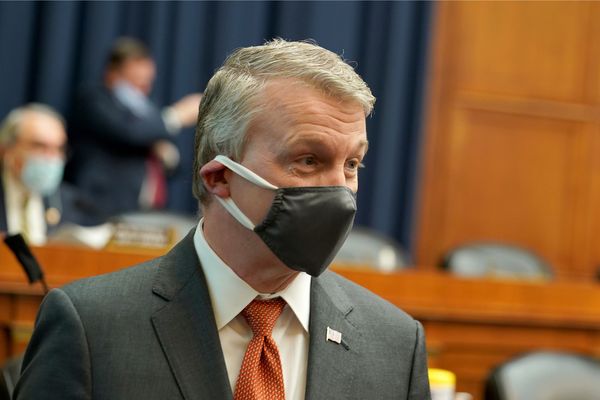The costs of Alzheimer’s disease – human and financial – are rising sharply in California and nationally, and census projections for America’s rapidly aging population suggest the scope of the disease soon might rival what America saw during the height of the COVID-19 pandemic.
In fact, new data from the Alzheimer’s Association’s 2023 Facts and Figures report, released March 15, points to several ways that the disease is already reshaping American life:
-- Last year, about 200,000 Americans over the age of 65 were diagnosed with Alzheimer’s and other forms of dementia, bringing the number of dementia patients in that age group to about 6.7 million. By 2050, the Alzheimer’s Association projects that number will nearly double, to about 13 million. (In California, the number of people with Alzheimer’s has been growing at a slightly faster clip, and by 2025 is expected to hit 840,000, up 21.7% in a five-year window.)
-- Annual spending on care for people with Alzheimer’s and other forms of dementia grew by about $24 billion last year, to about $345 billion. By 2050, such spending is expected to approach $1 trillion.
-- The value of unpaid caregiving is already nearly equal to paid caregiving. Last year, about 11 million Americans served as caregivers for people with Alzheimer’s, offering an estimated 18 billion hours of unpaid labor worth $339.5 billion. Those numbers, too, could double as the population ages up. Overall, the U.S. Census Bureau projects the number of Americans age 65 and older – the key age group hit by Alzheimer’s – to jump from about 63 million today to about 88 million by 2050.
Other data from the Alzheimer’s Association highlight different aspects of the disease and its social effects, from possible treatments to the physical and emotional toll on caregivers.
Here are some takeaways from this year’s report:
Quiet breakthroughs
It took about 13 months, give or take, for pharmaceutical companies and the government to come up with vaccines and treatments for COVID-19.
Alzheimer’s, to date, has been more stubborn.
Decades of research have produced no cure for Alzheimer’s and, absent other factors, the progressive neurological disease still kills most patients, usually four to eight years after the initial diagnosis. Last year, federal data shows Alzheimer’s was the seventh-leading cause of death in the United States and, prior to the emergence of COVID-19, it typically ranked No. 6.
Still, experts offered cautious optimism about the recent direction of Alzheimer’s treatments.
The Alzheimer’s Association report lists seven Alzheimer’s drugs that currently are approved by the Food and Drug Administration, most of which are aimed at temporarily staving off symptoms of the disease.
But the report notes that two drugs, aducanumab and lecanemab, are aimed at “changing the underlying biology of the disease.” And this week, the Veterans Health Administration (VHA) said it would cover the use of lecanemab, which is sold under the name Leqembi at a cost of about $26,500 per year. Federal officials have said the Food and Drug Administration will decide by early July if it will let Medicare make a similar move, meaning coverage could be expanded to include Medicare patients not enrolled in clinical trials.
Research has shown both drugs slow cognitive loss by 20% to 30% when compared with a placebo.
Experts say even if the current drugs aren’t, on their own, game-changers, they are important because their biological focus represents a new arena in the battle against the disease.
“This is a foundation,” said Nicole Purcell, a neurologist and senior director of clinical practice at the Alzheimer’s Association. “It’s just one type of medication, but it’s a reason to be hopeful for the future.”
But Purcell, like other health experts, noted that the drugs still are aimed at people who have Alzheimer’s but have not yet developed severe symptoms of dementia. That’s why she and others urge people to talk about cognitive issues with a physician as soon as they feel any cognitive decline.
But those conversations still aren’t happening as often as they should.
Still silent
For years, Alzheimer’s advocates have pushed older people to talk with health experts – not just their spouses or friends – as soon as they perceive any cognitive decline. And, for years, millions of older Americans have ignored that advice.
That reluctance is so widespread, and persistent, that in advance of this year’s report the Alzheimer’s Association conducted a series of focus groups to find out why.
The reasons, according to those focus groups, range from ignorance about the disease to the belief that the risks of learning about the disease outweigh the benefits of treatment, to simple fear.
What’s more, the report found that a significant number (up to 40%) of primary care physicians say they are reluctant to tell a patient they have Alzheimer’s, and instead refer them to specialists.
Purcell said that such discussions need to be “routine.”
“There’s so much more that can be done at that stage of the disease than later.”
But even if people are willing to talk about symptoms that might (or might not) be signs of Alzheimer’s, the report found some reluctance from healthcare providers. Not only are primary care physicians loathe to diagnose anyone with Alzheimer’s, the world of people expert in making such diagnoses – gerontologists and others – is too small to handle the present demand, much less the coming wave of Alzheimer’s patients.
Even in the non-professional side of Alzheimer’s care – the so-called “direct health” workers who have the people skills, patience and creativity to work well with people suffering from dementia – is undersized. The report projects the nation will need at least 1 million new “direct health care workers” by 2030.
Non-volunteer army
If there’s a shortage of workers to help with dementia patients, now and in the future, it’ll be bridged by people like Richard Wade.
Wade, a retired psychotherapist in Santa Clarita, and his sister-in-law provide care for his wife, who has seen her Alzheimer’s symptoms progress in the past year. Last year, about 11 million people nationally did something similar; by 2035 that number is likely to jump to 20 million or more.
“I’m lucky, financially. But if I weren’t retired, I’d have to hire someone to care for her, and that’s not something most people can do,” Wade said.
Wade said caring for a spouse with dementia can be daunting “on every level.” But he also said, in his case, “it can be rewarding, too.”
“I’m from the age group where ‘in sickness and in health’ still means something,” he said. “And I love my wife, so this is not always a burden.”
The report found that for many Alzheimer’s caregivers – typically spouses, usually of a similar age, or adult children, who often have their own children to raise – the non-financial costs of caregiving can be high.
Dementia caregivers, according to the report, suffer a higher incidence of stroke and heart disease, diabetes and cancer than other people of the same age. Caregivers, the report found, also suffer from higher rates of depression and anxiety, and are as much as 10 times more likely than others to contemplate suicide.
Wade, who attends a support group for caregivers, suggested the role is “bigger, in some ways,” than any other job he’s had.
“It affects, literally, everything in my life.”
Genetic future
Late last year, actor Chris Hemsworth took a hiatus from public life after finding out he carries a genetic marker (double ApoE4) that suggests the highest possible risk for developing Alzheimer’s later in life. About 2.5% of the population carries the double E4 gene, and their chances of eventually developing Alzheimer’s are 8 to 12 times higher than average.
Hemsworth learned about his genes through an expensive, rarely administered test. Some experts believe that if it were less expensive, and less rare, such testing might be a long-term game changer for Alzheimer’s care, if not a cure.
Still, for now, the Alzheimer’s Association isn’t pushing widespread genetic testing. Experts note that such testing only suggests – but can’t predict – an individual’s possible future with the disease. The organization’s official stance includes this line: “(Genetic) testing can never predict whether a person will or will not get Alzheimer’s disease.”
But what if it could?
The Alzheimer’s Disease Sequencing Project, which includes 345 scientists in 62 countries, started working in this area in 2002, but some of the biggest breakthroughs have come fairly recently.
For example, science conducted under the umbrella of the Sequencing Project, has found that Alzheimer’s isn’t a singular disease but is, instead, part of a broad genetic spectrum. Researchers also have found that while genetics isn’t the only factor (everything from lifestyle to environment also plays a role), genes can account for up to 80% of what is described as “disease susceptibility.”
And in its report issued this week, the Alzheimer’s Association noted that in just the past year researchers have identified 31 new genetic markers that “appear to affect biological processes known to be in play in Alzheimer’s disease.”
For her part, Alzheimer’s Association neuroscientist Purcell suggests a path that’s less about genetics and other branches of science, and more about basic, non-invasive, health.
Sleeping well and eating well, she said, can help stave off Alzheimer’s. And studies show that exercise, particularly exercise that boosts heart rate, even if started later in life, can be a particularly strong defense against developing Alzheimer’s. A combined look at 12 different studies, in the United Kingdom, found that exercise reduced the incidence of Alzheimer’s by 45%.
Purcell said the Alzheimer’s Association is leading U.S. Pointer, a two-year study of about 2,000 people, ages 60 to 79, that will explore how everything from diet and exercise to social connections can, or can’t, stave off cognitive decline.
When it comes to genetics vs. environment or behavior, Purcell said, “We can’t say ‘either or’ right now. We want to understand both. That’s why we’re engaged in the Pointer project. We want to see if we can come up with a lifestyle recipe to reduce the risk of cognitive decline as we age.







